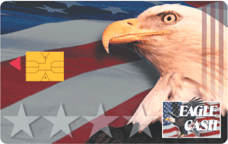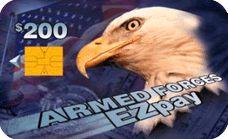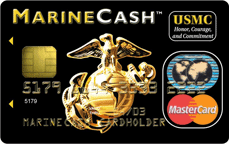U.S. Military relies on smart cards for a wide range of stored value payments
03 May, 2004
category: Financial, Government, Library
by Andy Williams, Contributing Editor, SecureIDNews
Thanks to smart cards, U.S. Navy ships are no longer “floating banks,” troops stationed overseas don’t have to carry large amounts of cash, and the U.S. doesn’t have to ship boatloads of currency to them. The U.S. Department of Treasury is managing four distinct smart card stored value programs for military applications: Navy Cash, Eagle Cash, Marine Cash, and EZpay.
 Every branch of the service has been touched by smart cards and likewise personnel at all levels–recruits, in-country, and field-deployed staff. But when we think of U.S. military smart cards, most think of the Common Access Card (CAC) issued to more than 4 million persons.
Every branch of the service has been touched by smart cards and likewise personnel at all levels–recruits, in-country, and field-deployed staff. But when we think of U.S. military smart cards, most think of the Common Access Card (CAC) issued to more than 4 million persons.
There is, however, another extremely successful smart card effort already in place involving U.S. military personnel. This project, actually four separate programs, is conducted by the U.S. Treasury Department’s Financial Management Service (FMS). The FMS is the U.S. government’s money manager, and it oversees most of the government’s stored value and debit card projects.
There are currently four stored-value cards in use by the military with uncharacteristically straight-forward names like Eagle Cash, Navy Cash, EZpay and Marine Cash, according to Kristine Conrath, acting director of the FMS Applied Technology Division. The four cards account for about $381 million in U.S. currency that has been loaded onto them.
EZpay and Marine Cash are disposable financial cards issued to recruits in basic training–EZpay for Army and Air Force and Marine Cash for the Marines. About one million of these cards are in use, accounting for $270 million, she adds.
Eagle Cash is a reloadable card issued to armed forces overseas, including Bosnia, Kosovo, Macedonia, Honduras, Afghanistan, Qatar, Uzbekistan, and Kyrgyzstan. There are about 50,000 Eagle Cash cards in use totaling about $86 million.
Navy Cash is the only dual-purpose card. It has both a chip, like the others, and a magnetic stripe. The chip is used on-board Navy ships while the magnetic stripe is used when the ship is in port. Nearly 42,000 sailors use Navy Cash on 21 ships, accounting for $25 million in transactions, said Ms. Conrath.
“We have our financial institutions operate these programs for us,” she added, the major one being the Federal Reserve Bank of Boston. Vendors providing technology to the programs, according to the General Services Administration, include Gemplus, SmartCentric, Verifone, and Hypercom.
“(The smart card programs) improve our financial controls, our cash management,” said Ms. Conrath. “It helps streamline our business processes and allows us to automate payments, our accounting, and the movement of the fund settlement. It also helps us reduce the cost of securing, counting, and transporting cash overseas and on ship,” she added.
Graham Mackenzie, stored value card program manager for FMS, told the Smart Cards in Government Conference (Arlington, VA., March 2004) that before Navy Cash, for example, “ships were essentially floating banks.” He stressed that the massive volume of currency that was carried on board a ship or on-base at a deployed location created massive security issues as well as logistical nightmares.

The birth of EZpay
“The first card we issued was in 1997,” said Ms. Conrath, “at Fort Leonard Wood (Missouri). The Army came to us because it had a cash management problem. It needed to pay the trainees on Day One. They were giving them checks, travelers checks, money orders. They wanted to make it more convenient and more efficient.”
The first smart card was based around the Visa Cash technology. After Fort Leonard Wood, other Army and Air Force bases came online with the cards over the next couple of years. In 2002, they were all consolidated, migrating to the disposable EZpay card.
According to a background report on the card from GSA, recruits are issued a smart card as they arrive. They receive an initial pay advance of $250 ($300 for females). The stored value can be used to pay for goods and services at the barber, post exchange, dry cleaners, phone center, on-post banks and credit unions.
Other bases using EZpay include: Lackland Air Force Base (Texas); Fort Knox (Kentucky); Fort Sill (Oklahoma); Fort Benning (Georgia); and Fort Jackson (South Carolina).

The U.S. Marines disposable smart card project, Marine Cash, came into being at Parris Island, S.C. in March, 2000. Like recruit recipients of EZpay, new Marines are issued cards when they first arrive and, like the others, it is how they draw their pay.
These cards hold other benefits, for both the military and the recruits using these smart cards. The card minimizes new recruit processing time and reduces the theft risk–no hard cash to be stolen, and the cards are also transferable from base to base. Ms. Conrath said that if soldiers haven’t used up their stored value on their disposable cards, they’re reimbursed with a check when they leave.
Mr. Mackenzie, in his March presentation, said EZpay and Marine Cash have reduced operating costs by 19%. Another benefit: It consolidated financial institutions from four to one–the aforementioned Federal Reserve of Boston, he said.
Eagle Cash goes abroad
In December 1999 the reloadable Eagle Cash card was introduced at Camp McGovern, Bosnia to soldiers and Department of Defense civilians. Like all the other cards, it was designed to eliminate the use of U.S. currency at the camp. It is used for all personal transactions on base and is accepted at all merchant locations, such as the PX, the post office, food court, barber/beauty shop, etc., said Mr. Mackenzie. Users load value on to the Eagle Cash card from payroll payments, bank account withdrawals, and cashed checks. The card can also be used to purchase foreign currency. Its success led to further deployments at a series of bases in Bosnia, Taszar, Hungary, Kosovo, and Honduras.

Smart cards set sail with the Navy
The Navy Cash application went live in April 2001. Now on 21 ships, the hybrid card can be used at a wide range of merchant and vending locations, said Mr. Mackenzie. ATMs on board ship have been replaced with kiosks and PCs. When in port anywhere in the world, the Navy Cash account can be accessed online at ATMs worldwide and merchant retailers using the existing global banking infrastructure (via the magnetic stripe). The Navy Cash program evolved from the Navy’s 13-year-old Automated Teller Machines-at-Sea program.
Next steps for stored value in the military?
A next step in the military’s march up the smart card ladder could be a consolidation with the Department of Defense’s Common Access Card (CAC), some four million of which are currently in use. “We have been having some discussion with the CAC groups, some preliminary discussions, but nothing has been finalized,” said Ms. Conrath. “It is just something that is being considered.”
Additional resources and links:
• NavyCash: The Sailor’s Automated Cash Handling System
An article from the Navy Supply Corp Newsletter, May/June 2001
• Presentation on Dept. of Treasury’s military stored value programs
Graham Mackenzie, US Treasury, March 2004
• Presentation on Dept. of Treasury’s electronic cash and payment initiatives
This presentation covers the military stored value programs a bit but also the whole range of Treasury initiatives


